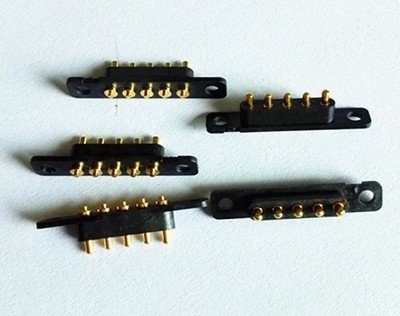Time:2025-03-27 Views:1 source:News

High - current PogoPin connectors are engineered to handle significantly larger electrical currents compared to standard PogoPin connectors. As the demand for higher - power electronic devices increases, such as in fast - charging applications, high - performance computing, and power - hungry industrial equipment, the need for connectors that can safely and efficiently transfer large amounts of current becomes crucial.
One of the key design features of high - current PogoPin connectors is their structure. To accommodate high currents, they often adopt a coaxial integration or a four - piece type structure. The coaxial integrated structure consists of a plunger part that is connected through a spring and a needle tube. This design helps to reduce resistance and ensure a smooth flow of current. In the four - piece type structure, additional components like a steel ball or a t - pin may be added inside the connector. These components increase the contact points when the current is turned on, which helps to distribute the current more evenly and reduces the risk of overheating and electrical failures.
The materials used in high - current PogoPin connectors are carefully selected to handle the high - current load. The plunger and barrel are typically made of materials with high electrical conductivity, such as brass. To further enhance conductivity and corrosion resistance, the surface of the plunger and cylinder is often nickel - plated, followed by a layer of gold plating. The spring material is usually a high - quality stainless steel, such as SUS304, which can withstand the mechanical stress caused by the repeated compression and expansion during the connector's operation. The housing material is chosen for its insulating properties and mechanical strength, with materials like high - temperature nylon being commonly used.
High - current PogoPin connectors are widely used in various industries. In the consumer electronics industry, they are essential for fast - charging applications. For example, in a smartphone or a tablet that supports fast charging, a high - current PogoPin connector can be used in the charging port to enable rapid charging, reducing the charging time significantly. In the automotive industry, these connectors are used in electric vehicle charging stations and on - board charging systems. They need to be able to handle the high - current requirements of charging an electric vehicle's battery efficiently and safely. In industrial applications, high - current PogoPin connectors are used in power distribution systems, where they connect high - power components and ensure the reliable transfer of electrical energy.
Read recommendations: